As someone who has been working with Onshape since it was still in its beta stage six years ago, seeing the world map below is nothing less than inspirational.

Each green dot represents a student, teacher or school now using PTC’s free Onshape Education plan. There’s barely a blank spot in Europe or most of the United States – and the white space there overlaps with unpopulated plains, deserts and mountains.
In a way, this map also delineates the industrialized versus the developing world in terms of technology access. So there’s a lot of work still to be done. But it’s worth pressing the pause button for a moment to celebrate. Not so long ago, Onshape was only in the classrooms of teachers who had personal connections to the product’s founders. Today, Onshape is changing the way teachers teach and students learn CAD on every continent except Antarctica.
And the growth of Onshape Education accounts over just the past year alone has been absolutely extraordinary:
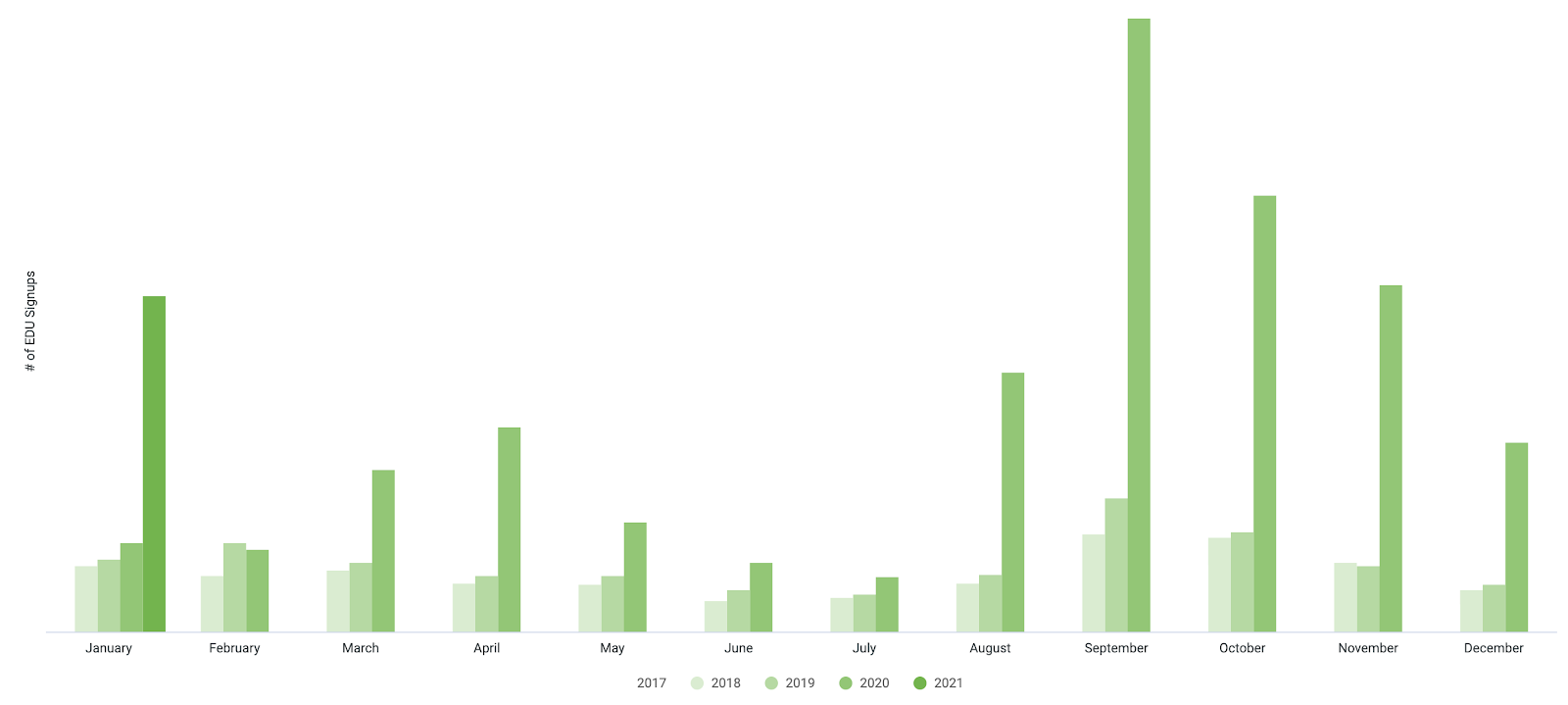
Take a look at the representational bar graph above that compares monthly adoption of new students using Onshape since 2017. A few weeks ago, the Onshape Education plans surpassed the one million user benchmark and they are not slowing down.
When Onshape was acquired in November 2019, the PTC Education team set an audacious goal of one million users, aiming to double the number of students using Onshape’s cloud-based CAD platform in the classroom by October 2021. That goal was achieved nine months early, undoubtedly because of the remote learning demands created by the COVID-19 pandemic.
We’ve written extensively how Onshape has helped educators from middle school up to graduate school save their STEM courses during the pandemic and prepare them to deal with future unpredictable learning challenges.
However, it’s important to note that the pandemic only accelerated a trend that was already happening. Schools have discovered that switching to Onshape’s cloud-based Software-as-a-Service (Saas) platform has improved the way students and teachers work together – and has improved the educational experience overall regardless of who’s physically in the classroom.
Let’s take a closer look at how Onshape is impacting the learning experience at both universities and K-12 schools.
College Snapshot: Improving CAD Collaboration at RIT and the University of Wisconsin
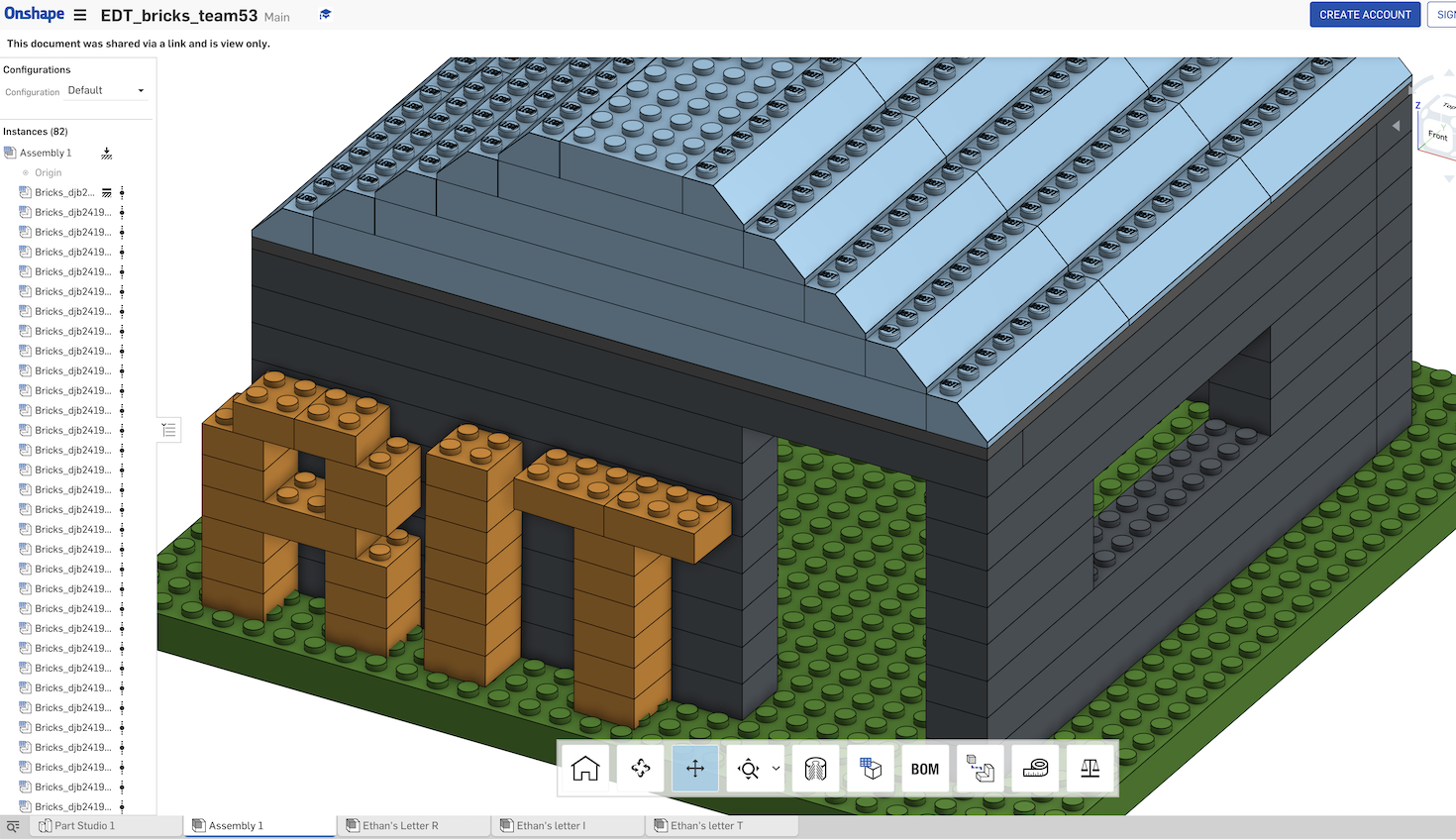
Onshape is improving the way students collaborate at RIT’s Kate Gleason College of Engineering.
At the Rochester Institute of Technology (RIT), senior lecturer Kate Leipold relies on Onshape to improve team collaboration between her first-year mechanical engineering students.
Although improved CAD accessibility was the original attraction – a growing number of her students prefer Macs, which do not run installed on-premise CAD software – it was Onshape’s real-time collaboration features that got her hooked. Unlike file-based CAD, Onshape allows multiple students to simultaneously work on the same 3D design, seeing each other’s changes as they happen as if they were looking over each other’s shoulders.
“We probably couldn’t do half of the CAD designs and projects that we do if we didn’t have Onshape,” Leipold says. “Being able to work with other people at the same time is incredible. It makes group projects so much easier and faster.”
Onshape’s unique CAD collaboration tools also enhance how she remotely conducts office hours with her on-campus students. Instead of flat interactions with a face on a screen, Leipold asks students to share the URL of the Onshape project they have been working on. “I'll go in and I'll watch what they're doing or I'll say, ‘Hold on and let me show you what I mean,’ and I can go in and they can see exactly what I'm doing,” she says.
In addition, Onshape helps educators see how effectively student teams are working together on group assignments. A comprehensive Edit History tracks who made what design change and when – allowing educators in an instant to determine if a project was completed with multiple contributors or if the work was disproportionately driven by one or two students.
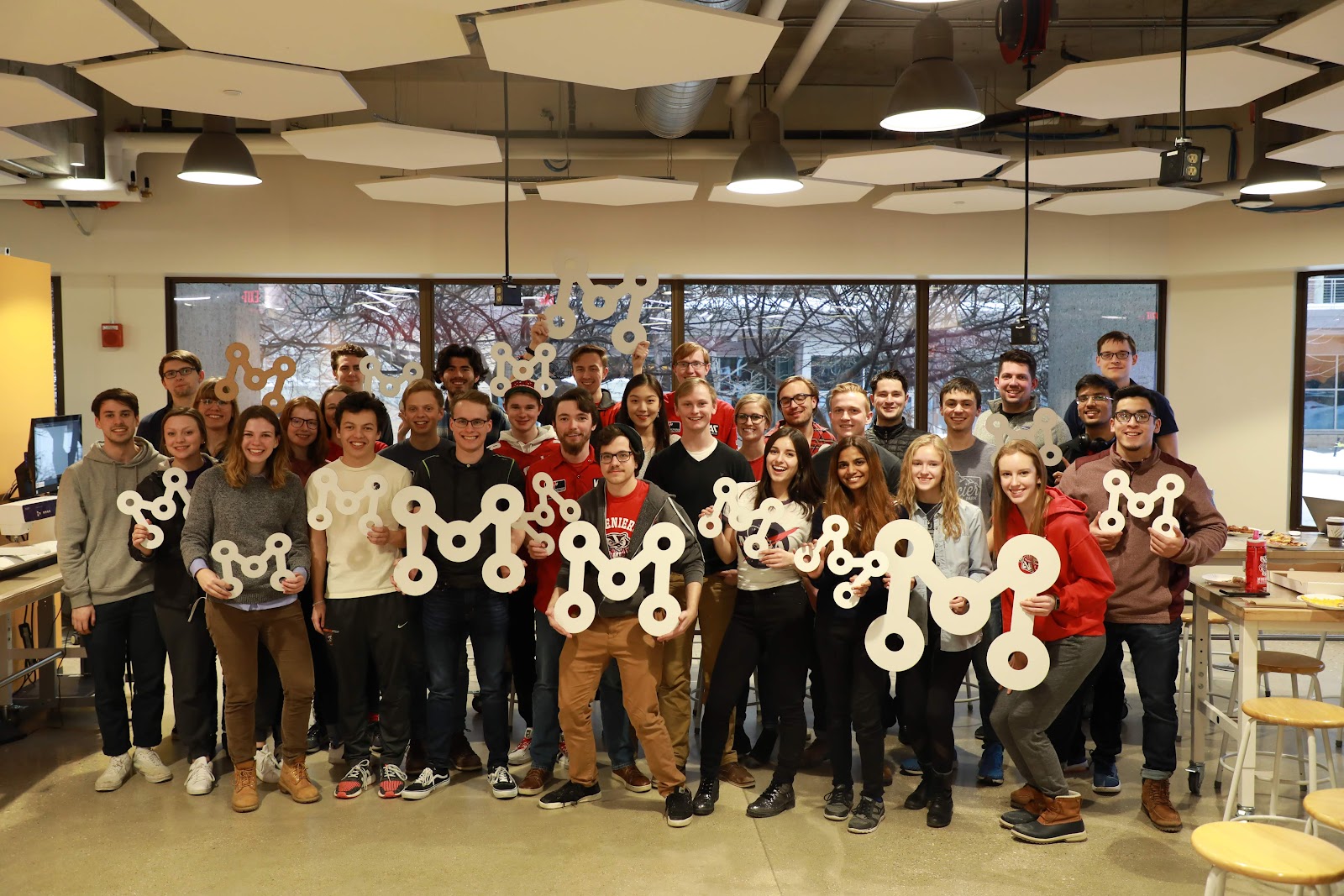
The Makerspace at the University of Wisconsin-Madison. (Photo by Lennon Rodgers)
At the University of Wisconsin at Madison, Onshape is embraced by the Grainger Engineering Design Innovation Lab, which serves 5,000 engineering students. Lennon Rodgers, the Innovation Lab’s director, says he regards the cloud Software-as-a-Service (SaaS) delivery of product development tools to be especially valuable as an administrator.
“Before coming to UW, I spent a lot of time as an MIT graduate student holding office hours just to help students install CAD software,” he recalls. “And so it’s amazing to be able to tell them to just sign up for an education account with their email address and they’re pretty much ready to go.”
Rodgers recently helped create the new Design + Innovation master’s program that’s a collaboration between the School of Business, College of Engineering, Art Department, School of Human Ecology and iSchool. One of the introductory courses is “Tools for Prototyping and Manufacturing,” and he wants future hardware engineers to be exposed to business best practices and future business executives to become more familiar with product design and development.
The ability to easily share Onshape models across company departments, to internal stakeholders who normally would not have access to CAD, fits the spirit and philosophy of the course.
“Most of the students who took this course had never used CAD before,” notes Rodgers. “And so I think it's a testament to say that they all felt comfortable using Onshape right away. I think a lot of business people can be intimidated by engineering. Onshape lowers that barrier and makes it easier to collaborate.”
K-12 Snapshot: PTC’s Free Onshape Education Accounts Make CAD Accessible to All
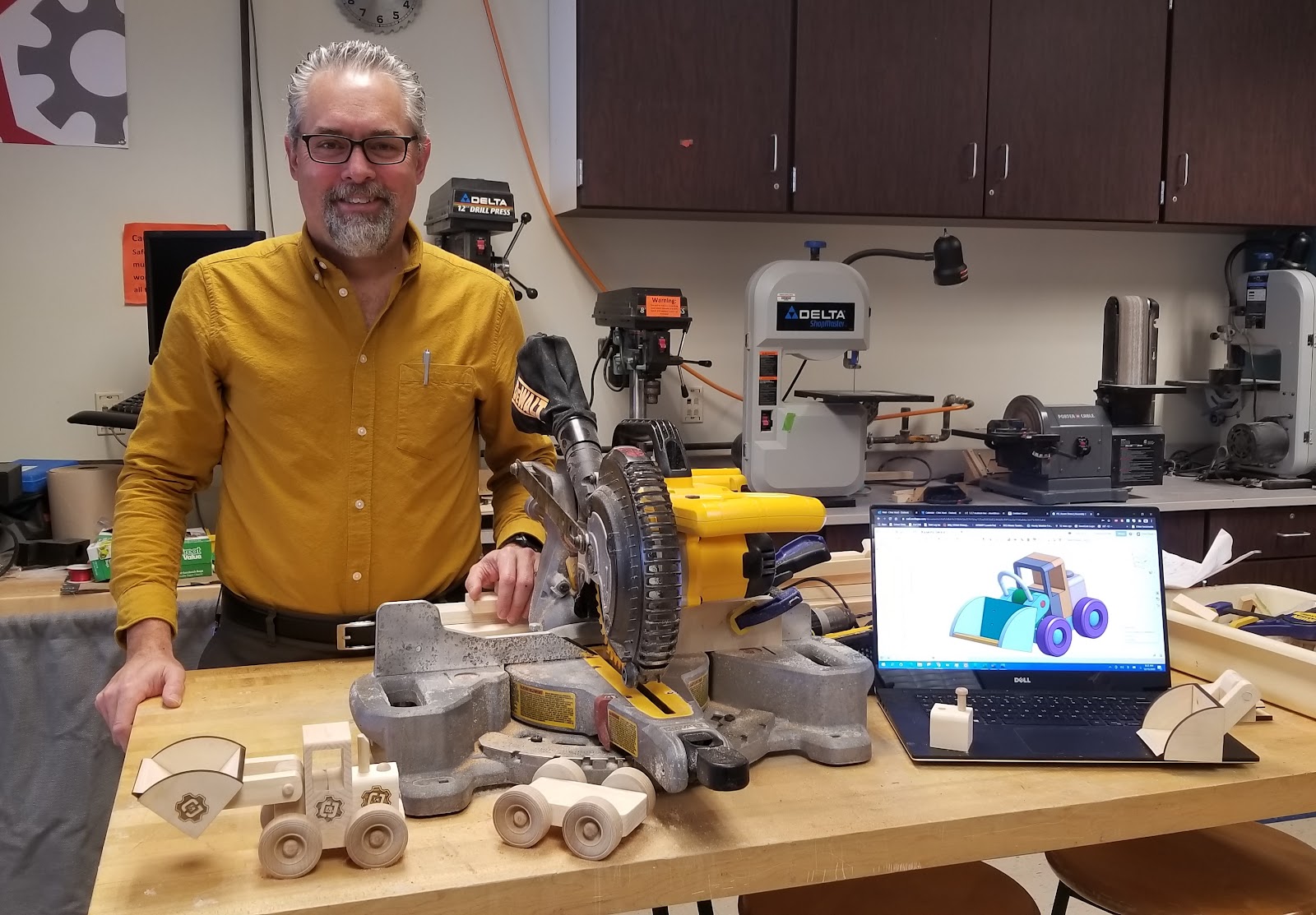
New York teacher Chris Hurd, who regularly trains other STEM educators in the latest manufacturing technologies, prefers Onshape’s cloud-based CAD platform for its real-time collaborative tools.
After three decades of teaching technology in upstate New York, Chris Hurd has seen a lot of changes.
“Back in the day, you couldn't take an eighth-grader through a CAD program because it would take them three days just to figure out how to log on,” he recalls. “Today, it's drop-dead simple for a teacher to do a few tutorials and all of a sudden, their kids are making models in 3D. You can actually have students working together in a document with the teacher. It amazes me how quickly technology is changing things for the better now.”
Hurd leads the Career and Technical Education (CTE) department for the Cazenovia Central School District, which is just outside of Syracuse. He also trains other STEM teachers at summer Project Lead the Way workshops and develops online Computer Integrated Manufacturing tutorials for ChrisandJimCIM.com. At Cazenovia, Onshape is used for five engineering classes spanning from grades 8 through 12.
According to Hurd, the economic pressures of the pandemic have caused additional strain on school budgets – making PTC’s free Onshape Education accounts all the more valuable.
“In today's educational climate, you always have to look at the best bang for your buck. Because of a lot of different factors, money for CTE is going to dry up, especially in smaller or rural school districts. So every day we have to do more with less. This coming year is going to be drastic,” he says. "When budget cuts come to school districts, like during a pandemic, it usually hits CTE programs before core subjects like math, science and English.”
“One of the biggest barriers to technology access is money, of course,” Hurd adds. “So if you can't afford a high-end Mac or PC to run your CAD software, it used to be that you were out of luck. Now with Onshape, students can use a school-issued Chromebook or an old laptop. As long as they have an internet connection, they are good to go. Onshape lowers the barrier of entry for families who don't have a lot of money floating around. It's a total game-changer.”
Budget issues aside, Hurd says he’s witnessed Onshape education accounts having a profound impact on the way his students learn.
“The collaboration you can do between a teacher and students in Onshape really helps me push them in the right direction. Not to give them the right answer, but to show them how to do something. It's visual and most people are visual learners,” he says.
“I also find it's easier for two kids who don't know one another to work together through a computer than it is for them to work side-by-side, face-to-face,” Hurd adds. “So Onshape is bringing kids closer together. Kids who really wouldn't ever work together can now work together, and it's very collaborative.”
Students Embrace the Certified Onshape Associate Exam
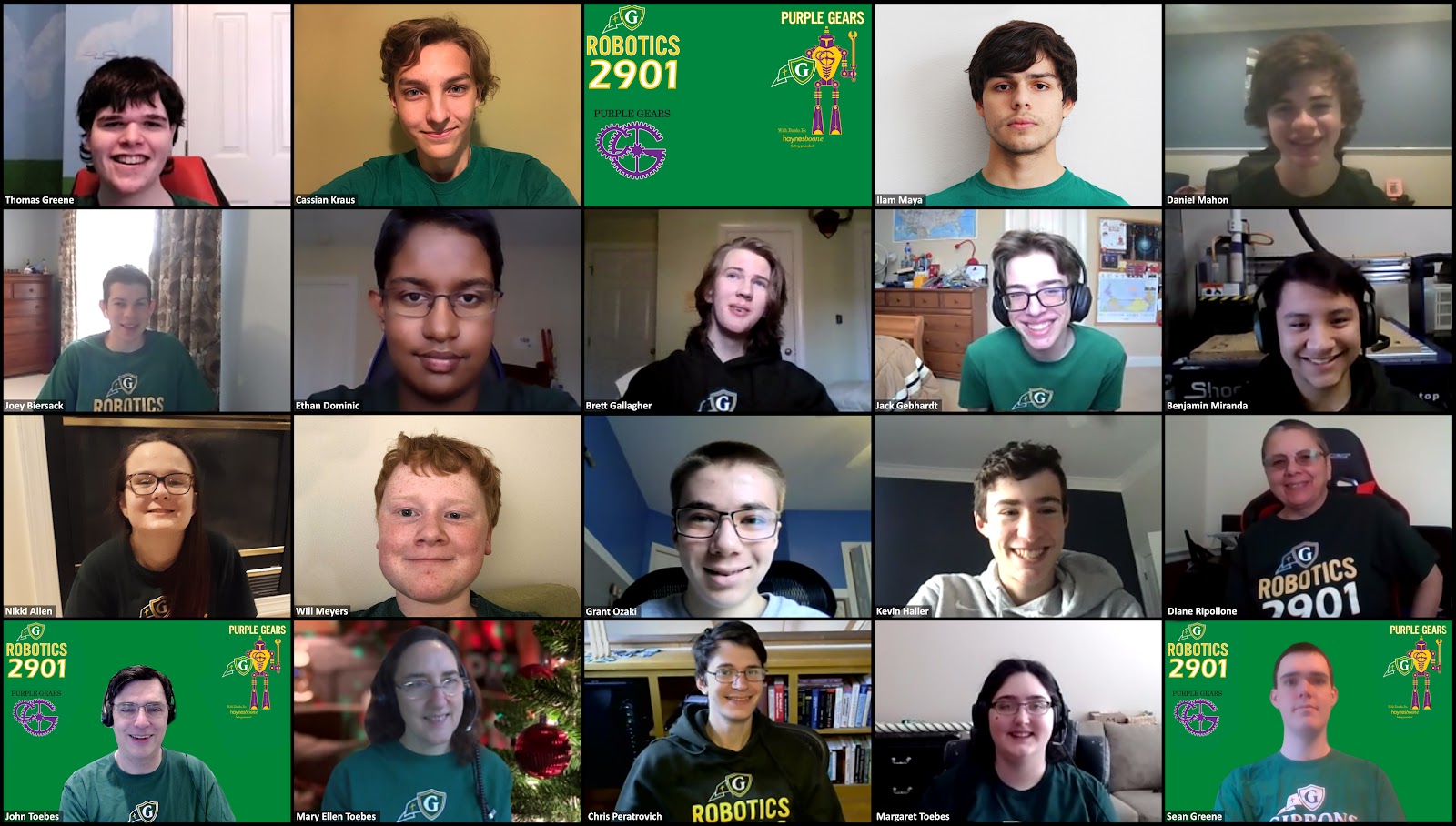
Students from FIRST Tech Challenge Robotics Team 2901 in North Carolina are proud to be Onshape Certified Associates.
Once students have experienced the advantages of cloud-based CAD, many are seeking to prove what they’ve learned by taking the new Certified Onshape Associate exam. The test is aimed at educators, students and entry-level engineers interested in demonstrating their CAD proficiency to prospective employers.
This certification exam is designed for candidates who have a minimum of 35 to 50 hours of Onshape experience. In addition to being used to validate CAD knowledge in a work or academic setting, it can also be used as a final exam for a semester or year-long CAD course.
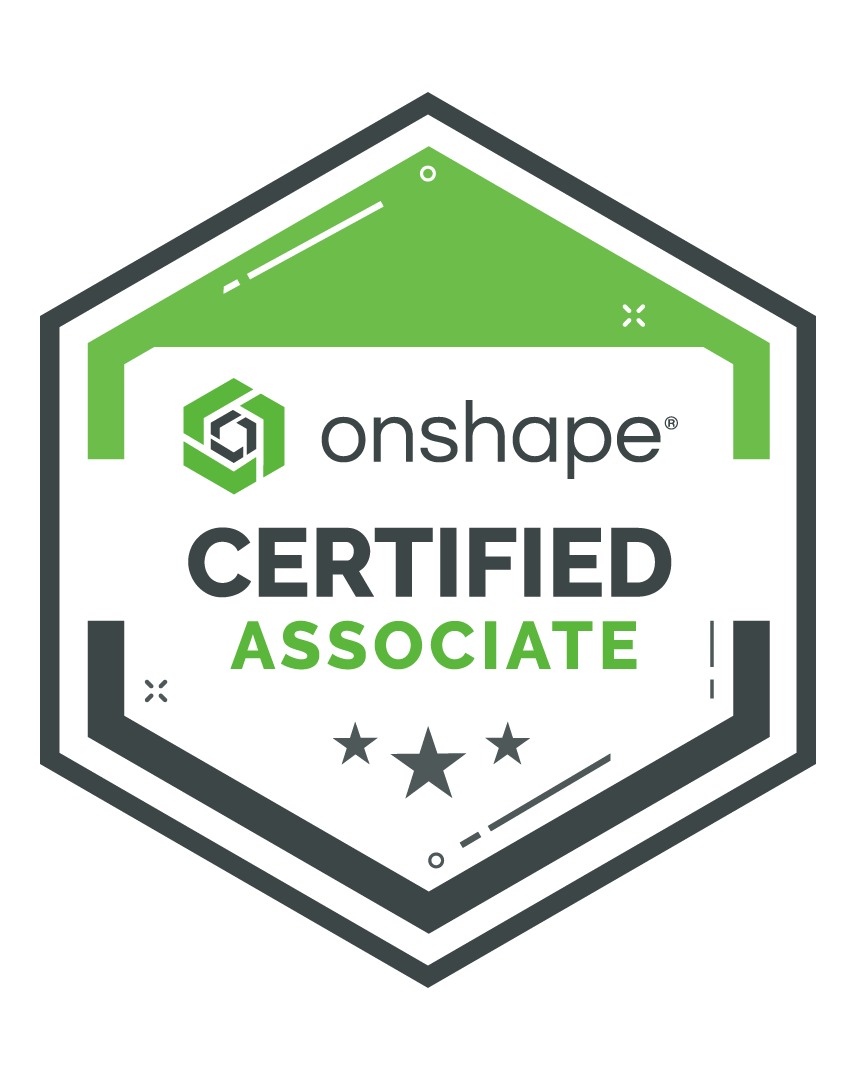 “The biggest value in earning an Onshape certification is that it is something you can show the world that says, ‘I have taken the effort to learn something in such a way that it’s recognized by the owner of the product that I’m good at,’” notes software engineer John Toebes, who mentors students on the Cardinal Gibbons High School FIRST Tech Challenge Robotics Team in Raleigh, North Carolina.
“The biggest value in earning an Onshape certification is that it is something you can show the world that says, ‘I have taken the effort to learn something in such a way that it’s recognized by the owner of the product that I’m good at,’” notes software engineer John Toebes, who mentors students on the Cardinal Gibbons High School FIRST Tech Challenge Robotics Team in Raleigh, North Carolina.
“Juniors and seniors get the most value out of certification because they can put it on their college applications and demonstrate they put in the effort to develop new skills,” he adds.
The three-hour Associate exam verifies a user’s understanding of Onshape’s part modeling, multi-part modeling, basic assembly design, drawing knowledge, and sharing and collaboration tools. It does not address Onshape’s unique data management techniques, advanced modeling capabilities, or advanced assembly motion – topics all covered by the Certified Onshape Professional exam.
(Learn how your K-12 school or university can benefit from PTC’s free Onshape Education plans.)


